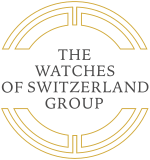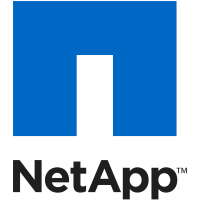
GN Store Nord A/S
CSE:GN


| US |

|
Johnson & Johnson
NYSE:JNJ
|
Pharmaceuticals
|
| US |

|
Berkshire Hathaway Inc
NYSE:BRK.A
|
Financial Services
|
| US |

|
Bank of America Corp
NYSE:BAC
|
Banking
|
| US |

|
Mastercard Inc
NYSE:MA
|
Technology
|
| US |

|
UnitedHealth Group Inc
NYSE:UNH
|
Health Care
|
| US |

|
Exxon Mobil Corp
NYSE:XOM
|
Energy
|
| US |

|
Pfizer Inc
NYSE:PFE
|
Pharmaceuticals
|
| US |

|
Palantir Technologies Inc
NYSE:PLTR
|
Technology
|
| US |

|
Nike Inc
NYSE:NKE
|
Textiles, Apparel & Luxury Goods
|
| US |

|
Visa Inc
NYSE:V
|
Technology
|
| CN |

|
Alibaba Group Holding Ltd
NYSE:BABA
|
Retail
|
| US |

|
JPMorgan Chase & Co
NYSE:JPM
|
Banking
|
| US |

|
Coca-Cola Co
NYSE:KO
|
Beverages
|
| US |

|
Walmart Inc
NYSE:WMT
|
Retail
|
| US |

|
Verizon Communications Inc
NYSE:VZ
|
Telecommunication
|
| US |

|
Chevron Corp
NYSE:CVX
|
Energy
|
Utilize notes to systematically review your investment decisions. By reflecting on past outcomes, you can discern effective strategies and identify those that underperformed. This continuous feedback loop enables you to adapt and refine your approach, optimizing for future success.
Each note serves as a learning point, offering insights into your decision-making processes. Over time, you'll accumulate a personalized database of knowledge, enhancing your ability to make informed decisions quickly and effectively.
With a comprehensive record of your investment history at your fingertips, you can compare current opportunities against past experiences. This not only bolsters your confidence but also ensures that each decision is grounded in a well-documented rationale.
Do you really want to delete this note?
This action cannot be undone.

| 52 Week Range |
82.56
153.95
|
| Price Target |
|
We'll email you a reminder when the closing price reaches DKK.
Choose the stock you wish to monitor with a price alert.

|
Johnson & Johnson
NYSE:JNJ
|
US |

|
Berkshire Hathaway Inc
NYSE:BRK.A
|
US |

|
Bank of America Corp
NYSE:BAC
|
US |

|
Mastercard Inc
NYSE:MA
|
US |

|
UnitedHealth Group Inc
NYSE:UNH
|
US |

|
Exxon Mobil Corp
NYSE:XOM
|
US |

|
Pfizer Inc
NYSE:PFE
|
US |

|
Palantir Technologies Inc
NYSE:PLTR
|
US |

|
Nike Inc
NYSE:NKE
|
US |

|
Visa Inc
NYSE:V
|
US |

|
Alibaba Group Holding Ltd
NYSE:BABA
|
CN |

|
JPMorgan Chase & Co
NYSE:JPM
|
US |

|
Coca-Cola Co
NYSE:KO
|
US |

|
Walmart Inc
NYSE:WMT
|
US |

|
Verizon Communications Inc
NYSE:VZ
|
US |

|
Chevron Corp
NYSE:CVX
|
US |
This alert will be permanently deleted.
GN Store Nord A/S
In the bustling world of global technology, GN Store Nord A/S stands out as a fascinating player with a legacy dating back to 1869. Originally rooted in the telegraph industry, the company has adeptly metamorphosed through time to become a leader in hearing aids and audio devices. The heart of GN Store Nord's business beats in its dual prowess: GN Hearing and GN Audio. These twin pillars allow the company to seamlessly blend healthcare innovation with cutting-edge consumer technology. GN Hearing focuses on the development and production of advanced hearing aid solutions, catering to the growing demographic of individuals seeking quality life enhancements through better hearing. By leveraging sophisticated technologies, such as artificial intelligence and wireless connectivity, GN Hearing offers a range of products that improve the auditory experience for users worldwide.
Parallelly, GN Audio operates under the brand Jabra, where it crafts a variety of audio and video solutions that cater to both professional and personal needs. From state-of-the-art headsets used in corporate environments to immersive earbuds favored by audiophiles, GN Audio has carved a significant niche for itself in the audio market. The synergy between GN's hearing and audio segments not only fuels revenue generation but also sustains its commitment to innovation, allowing the company to adapt and thrive in an ever-evolving technological landscape. By tapping into the demand for superior audio and communication devices, GN Store Nord maintains a robust financial performance while continuously exploring new growth avenues within its core sectors.

In the bustling world of global technology, GN Store Nord A/S stands out as a fascinating player with a legacy dating back to 1869. Originally rooted in the telegraph industry, the company has adeptly metamorphosed through time to become a leader in hearing aids and audio devices. The heart of GN Store Nord's business beats in its dual prowess: GN Hearing and GN Audio. These twin pillars allow the company to seamlessly blend healthcare innovation with cutting-edge consumer technology. GN Hearing focuses on the development and production of advanced hearing aid solutions, catering to the growing demographic of individuals seeking quality life enhancements through better hearing. By leveraging sophisticated technologies, such as artificial intelligence and wireless connectivity, GN Hearing offers a range of products that improve the auditory experience for users worldwide.
Parallelly, GN Audio operates under the brand Jabra, where it crafts a variety of audio and video solutions that cater to both professional and personal needs. From state-of-the-art headsets used in corporate environments to immersive earbuds favored by audiophiles, GN Audio has carved a significant niche for itself in the audio market. The synergy between GN's hearing and audio segments not only fuels revenue generation but also sustains its commitment to innovation, allowing the company to adapt and thrive in an ever-evolving technological landscape. By tapping into the demand for superior audio and communication devices, GN Store Nord maintains a robust financial performance while continuously exploring new growth avenues within its core sectors.
Organic Growth: GN delivered 1% organic revenue growth in Q3, with Hearing up 7%, Enterprise down 4%, and Gaming up 3%, reflecting market share gains and strong execution in key segments.
Margins & Cash Flow: Gross margin remained strong at 54.4%, just 0.4 percentage points below last year, and cash flow was solid at DKK 410 million for the quarter.
Guidance Reconfirmed: Management reaffirmed full-year guidance for organic revenue growth of -2% to +2%, EBITDA margin of 11%–13%, and around DKK 800 million in free cash flow (excluding M&A).
Enterprise Trends: Enterprise saw negative organic revenue growth but positive sell-out growth for the fourth consecutive quarter in North America and APAC; Europe remains challenged by macro headwinds.
Product Success: New product launches like ReSound Vivia in Hearing and Arctis Nova Elite in Gaming received strong market feedback and drove market share gains.
Tariff Impacts: Tariffs negatively affected results, especially in Gaming, but GN is mitigating impacts with supply chain adjustments and price increases.
Positive Outlook: Management expressed confidence in continued improvement in Enterprise growth, ongoing margin recovery, and the successful rollout of new product platforms.





































